Audio Autopsy, 1966 & 1976: The Left Banke & The Beckies: The Baroque Pop of Michael Brown
So sublime and precious, Brown's songwriting and keyboards for both The Left Banke and The Beckies are the rare gems that spawned a micro-genre few have replicated with as much aplomb.
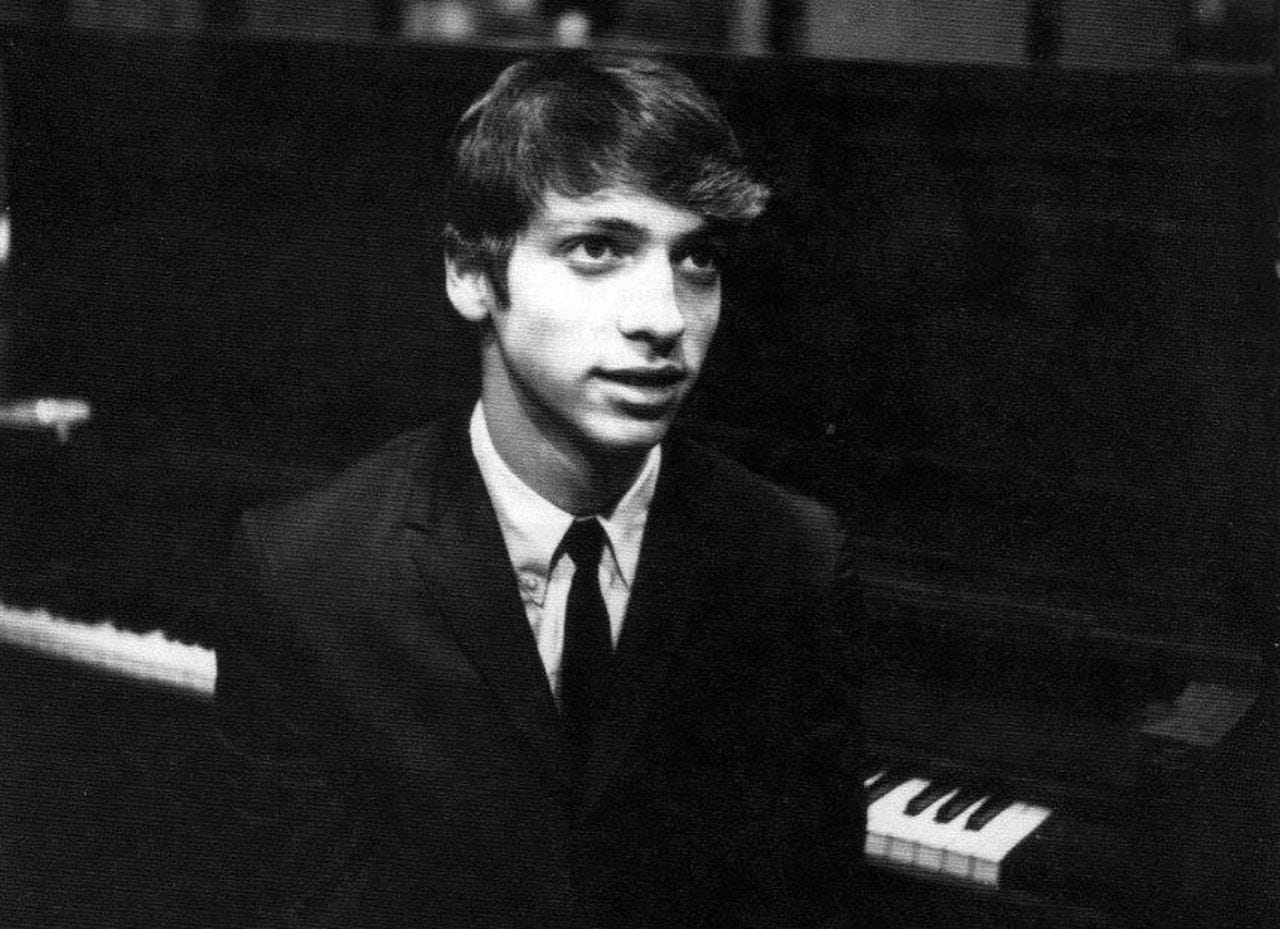
Any story about The Left Banke begins and ends with songwriter/keyboardist Michael Brown; in fact, any story about The Beckies a decade later begins and ends with the musical prodigy few know anything about, despite the fact that there’s a couple of his tunes they could hum.
With a rare gift for crafting creatively haunting melodies on a par with Brian Wilson (coming nowhere near that Beach Boy’s prodigious output, of course), Brown was a member of four bands in his lifetime, with The Beckies, in 1976, being his last.
“A fragile talent, but one of the highest order; a singular vision of pop at its loveliest.”--The Guardian, on Brown and his music, 2015
In fact, Brown, born Michael David Lookofsky, rather fancied himself a bit of an east coast mini-Brian: According to the Chicago Tribune in 2015, Brown “was interested in doing what Beach Boys creative leader Brian Wilson had done: Giving up live performance to concentrate on exploiting the new musical and sonic possibilities that technology was bringing to recording studios.”
The Left Banke
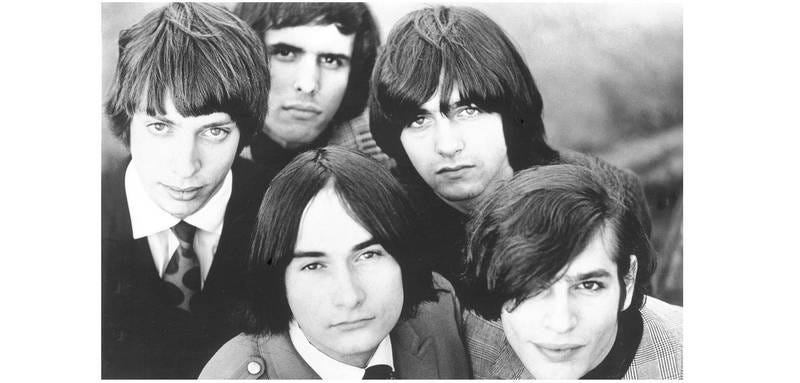
Born in Brooklyn in April 1949 to bebop jazz violinist, producer and arranger, Harry Lookofsky, Michael helped found The Left Banke in New York in 1965. He was 16, and was the band’s key songwriter, as well as a classically-trained keyboardist, playing harpsichord and clavinet.
The Left Banke’s Tom Finn: “A bunch of teens got an apartment together around Tin Pan Alley, in the Broadway area, and Renée lived there part time when she wasn't living with her mother. Most of the kids were like half-runaways in those days, and there was a ‘crash pad’ there, as we used to call it. I guess I brought her to the studio one day where Michael met her and fell in love with her.
“We [George Cameron, Warren David, Steve Martin Caro] never had a plan to be a group, but Michael had the keys to his father's studio. I'd bring my girlfriend Renée along, and Michael fell for her, getting his heart broken, but writing these amazing melodies.”
The Chicago Tribune: “Knowing there was nothing he could do about his infatuation with Renée without torpedoing a friendship and possibly their band, Brown took the only path left to an anguished musician: He wrote a song about her.”
Brown: “I was just sort of mythologically in love, if you know what I mean, without having evidence in fact or in deed. But, I was as close as anybody could be to the real thing.” Renée was actually looking on during the recording of the song, and her presence nearly prevented its completion.
In an interview, Brown once said: “My hands were shaking when I tried to play, because she was right there in the control room. There was no way I could do it with her around, so I came back and did [the keyboard parts] later!”
“Walk Away Renée,” which Brown wrote with friends, Bob Calilli and Tony Sansone, became the Left Banke's first and biggest hit, reaching No. 5 on the Billboard Top 100 chart. The song, which took about eight weeks for The Left Banke to write and record, was rejected by ten major labels before Charlie Fach of Smash Records (a subsidiary of Mercury) decided to take it on.
Bob Stanley from a 2015 The Guardian article: “Brown had unlimited access to his father’s studio where, according to the Left Banke’s part-time lyricist Tom Feher, ‘he’d just pound away at the piano, and we’d all stand around the piano and try to emulate the Beatles and the Hollies.’
“With orchestral arrangements from his father, and Brown’s knack for odd, bunched chords and a taste for extreme melancholy, the sound was quickly tagged ‘baroque pop’ by the press. To show the songs could stand up perfectly well without the ornate arrangements, the Four Tops’ apocalyptic cover of ‘Walk Away Renee’ reached No. 3 in Britain at the start of 1968.
“It wasn’t an entirely new sound – the Beatles’ ‘Eleanor Rigby,’ the Stones’ ‘Lady Jane,’ and even the Troggs’ ‘Anyway That You Want Me’ – were baroque in approach, and both the Zombies and Glasgow’s Poets had based their careers around minor key, semi-classical songwriting. But, Brown had a special talent, and an instantly recognizable style.”
“That song nailed that arc of emotion and the arc of how it works. I love that song.”--Linda Ronstadt
“That's a real special song for me in the whole pop music canon,” Linda Ronstadt told The Los Angeles Times when she released a 2006 compilation of her duets with various singers, including her version of ‘Walk Away Renée’ with Cajun musician Ann Savoy:
“When it first came on the radio, I didn't have any idea what the words were,” Ronstadt said. “It just sounded like ‘La la la.’ I didn't know any of the words, I couldn't understand them, and yet, in a second, it became just one of those haunting songs you can't forget. I don't know what it is.
“There's the feeling when you give up on somebody, and you just let it go. That song nailed that arc of emotion and the arc of how it works. I love that song.”
Finn: “Mike left the group before ‘Walk Away Renée’ broke [summer 1966]. He refused to tour -- not that I can blame him. We'd go do gigs and get our asses kicked by local bands with better equipment.
“Once, Michael's father caught us in the studio and heard us, he wanted to get in on the action. That started things rolling, but it was also the kiss of death.
“There were always disagreements with Michael's father. They tried to throw Steve, George, and me out of the band but rehired us two weeks later when they realized the chemistry was gone.”
The Follow-Up: “Pretty Ballerina,” December 1966, Smash Records
Written solely by Michael, “Pretty Ballerina” tugs at the heartstrings even if you have no idea of the lyrical content (you guessed it: More heartbreak concerning our old friend, Renée, the ballerina). Excerpt: “I begged for her to tell me if she really loved me. Somewhere a mountain is moving; I’m afraid it’s moving without me.”
Unusually advanced sexual awareness for a minor, and pre-dating by five years Carole King’s “I Feel the Earth Move,” where similar feelings for a loved one caused her to “lose control down to her very soul”!
According to author Walter Everett, “Pretty Ballerina” was one of the first pop songs to use the haunting Lydian mode in its melody (more specifically the acoustic scale), predating the Beatles’ Indian-inspired “Blue Jay Way,” and Donovan’s “Peregrine.”
So, even at 17, Brown is running compositional circles around the competition. They would catch up…eventually. It’s interesting to note, that unlike most songwriters, Brown didn’t sing lead, but added occasional harmony vocals on Left Banke songs (he did sing lead on “What Do You Know”).
Steve Martin Caro handled the lead chores on “Walk Away Renée” and “Pretty Ballerina,” while Brown played harpsichord. Dad, Harry, was co-producer on both hits.
Back to The Guardian’s Bob Stanley: “The writing and arrangements of Lookofsky and son could make your heart twist and snap: For example, there’s the moment on ‘Pretty Ballerina,’ as the middle eight begins, lurching into an unexpected minor key woodwind and string section”:
For those keeping score, Renée ended up becoming Renée Fladen-Kamm, a longtime west coast vocal coach, vocal director, and a highly-trained and skilled light lyric soprano, who has performed not only early music, but opera as well.
At some point in their career, I suppose this was inevitable, a Brown-penned Coke radio jingle:
A thorough “Band History” video look at The Left Banke, as well as every band Michael Brown was in, except The Beckies! Not to worry: I let the video creator know about that grand omission in his comment section!👇
Essentially a Left Banke effort in everything but name, “Two by Two (I’m Losing You)” was a single attributed to Steve Martin Caro, with Brown writing and producing on Buddah Records in 1971.
This song, plus “Love Songs in the Night” made it onto the soundtrack album of a little-seen documentary, Hot Parts. Here, Brown’s signature plaintive melody, and yearning chord structures combine with gorgeous harmonies on this ballad beautifully sung by Caro, pictured here in red.
Between The Left Banke and The Beckies, Brown was involved with Montage (1968, Laurie Records, mainly songwriting, and not officially a performing member) and Stories (with Ian Lloyd, 1972-74, Kama Sutra Records). Stories, of course, had a hit with Hot Chocolate’s “Brother Louie,” but by then, Brown had split.
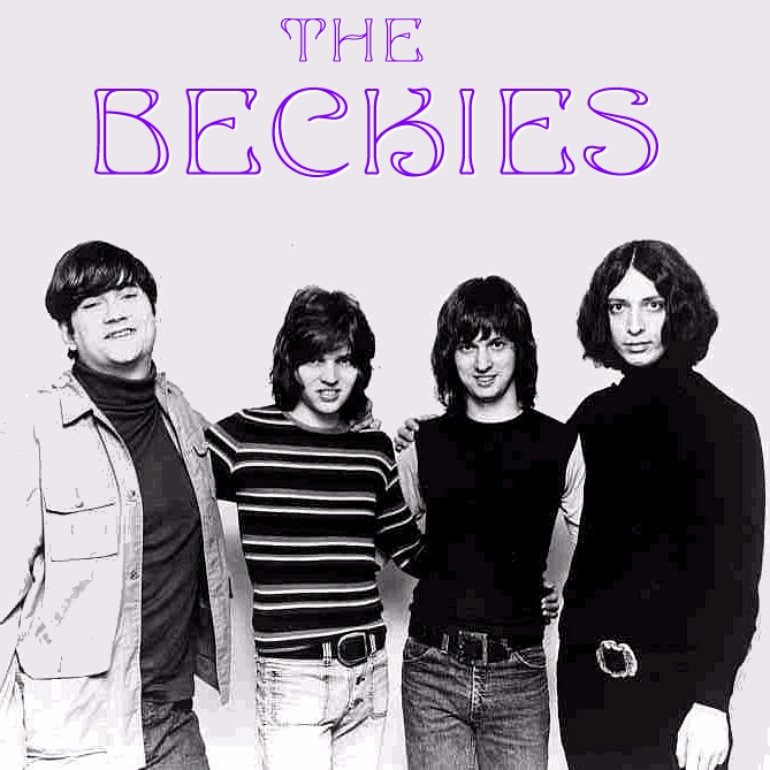
“The music on The Beckies is pure power pop,” says Peter Marston of PopGeekHeaven in 2013, and I certainly can’t disagree. In fact, on my Mt. Rushmore of power pop, I’d place The Raspberries, Cheap Trick, Jellyfish, and The Beckies.
“Some of the baroque-pop flourishes remain,” Marston continues, “especially and predictably in the keyboard arrangements, and there are occasional string passages as well. More typical, though, are crunchy guitar chords, energetic drumming and soaring vocal hooks.”
Interestingly enough, at least three more songs were recorded for the album, but none made the final track listing. These outtakes are: “The Story,” “Blue Monday,” and “She Wrote a Song.”

45 years in the making, here’s Michael Brown, at 62 (far right foreground in thumbnail), performing “Pretty Ballerina” with Tom Finn, George Cameron, and an updated Left Banke in 2012!👇
Having passed in 2015, Michael Brown (pictured above, right, in 2014 with musician friend, Les Fradkin) is survived by his wife, Yvonne, and twin sons Skylar and Adrian, now 24.


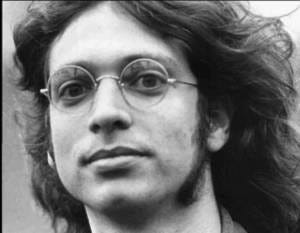
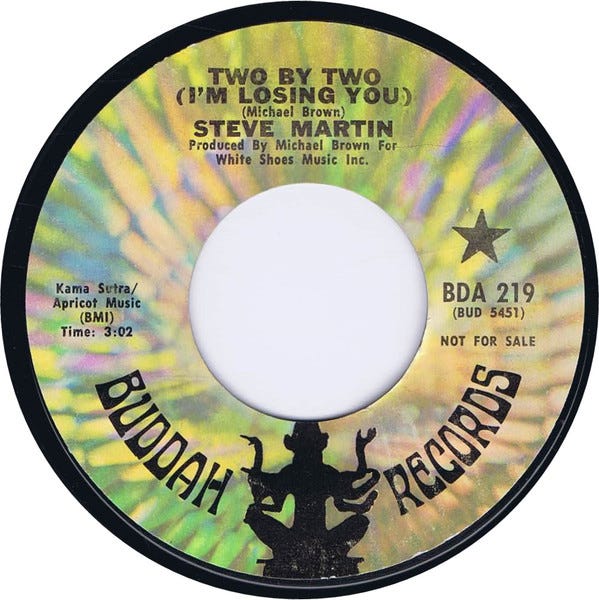



Pure gold, Brad - I remember these songs when I was growing up - less popular with the crowd I hung out with, but I always loved the sound - different from most of the other stuff on AM radio and cool because of it
Great piece, Brad. I thoroughly enjoyed reading it. Made me want to hear these songs again, which I always think is the goal of writing about music.